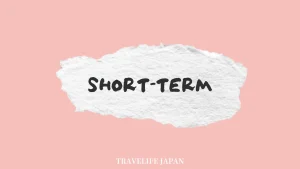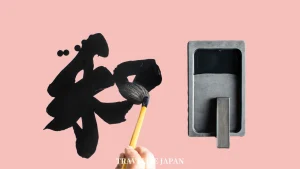Looking to learn counting numbers in Japanese? Mastering numbers, dates, and time is crucial for anyone starting this language journey. Our guide simplifies these key elements, aiding in everyday conversations and offering a glimpse into Japan’s culture. Perfect for beginners and advanced learners alike, understanding these basics is essential for effective communication.
Understanding Numbers in Japanese

Understanding Basic Japanese Numbers
Japanese numbers from one to ten lay the foundation for the language’s counting system. Each number from one to ten has its own unique pronunciation and character: 一 (いち, ichi) for one, 二 (に, ni) for two, 三 (さん, san) for three, and so on, up to 十 (じゅう, juu) for ten. The language distinguishes between different pronunciations for some numbers, such as four and seven, which can be said as “し (shi)” or “よん (yon)” for four, and “しち (shichi)” or “なな (nana)” for seven. This flexibility in pronunciation accommodates various contexts and preferences within Japanese communication.
| Number | Japanese |
|---|---|
| 1 | いち (ichi) |
| 2 | に (ni) |
| 3 | さん (san) |
| 4 | し/よん (shi/yon) |
| 5 | ご (go) |
| 6 | ろく (roku) |
| 7 | しち/なな (shichi/nana) |
| 8 | はち (hachi) |
| 9 | きゅう/く (kyuu/ku) |
| 10 | じゅう (juu) |
| 11 | じゅういち (juuichi) |
| 12 | じゅうに (juuni) |
| 13 | じゅうさん (juusan) |
| 14 | じゅうし/じゅうよん (juushi/juuyon) |
| 15 | じゅうご (juugo) |
| 16 | じゅうろく (juuroku) |
| 17 | じゅうしち/じゅうなな (juushichi/juunana) |
| 18 | じゅうはち (juuhachi) |
| 19 | じゅうきゅう/じゅうく (juukyuu/juuku) |
| 20 | にじゅう (nijuu) |
| 100 | ひゃく (hyaku) |
| 1000 | せん (sen) |
Forming Larger Numbers in Japanese
Japanese employs a decimal system for constructing larger numbers, which is both logical and straightforward once the basic numbers one through ten are understood. Numbers beyond ten are created by combining the base numbers. For instance, eleven is formed as 十一 (じゅういち, juuichi), literally translating to “ten one.” Twenty is expressed as 二十 (にじゅう, nijuu), or “two ten.” This pattern continues consistently, making it easy to comprehend and form numbers all the way into the thousands and beyond, facilitating clear and precise numerical communication in everyday life.
Counting Objects with Japanese Counters
In Japanese, counting objects requires the use of specific counters, known as “counting words,” tailored to the shape, nature, or category of the object being counted. This aspect of the Japanese language reflects its attention to detail and the importance of context. For general objects, the counter “-つ (tsu)” is used, as in 一つ (ひとつ, hitotsu) for one object. For counting books, the counter “-冊 (-さつ, -satsu)” is applied, resulting in expressions like 二冊 (にさつ, nisatsu) for two books. This system of counters enriches the language, offering learners a deeper insight into Japanese culture and communication styles.
Expressing Dates and Months in Japanese

In Japan, the way dates are expressed beautifully intertwines the country’s rich history with the practicality of modern times. When talking about dates, the Japanese start with the year, followed by the month, and then the day. This order reflects the thoughtful and organized nature of Japanese culture.
Understanding Months and Days
Japanese months are named quite simply by adding “月” (gatsu), which means month, after the numerical value. So, January is “一月” (ichigatsu), translating directly to “month one,” and February is “二月” (nigatsu), or “month two.” Days are indicated in a similar manner, with a number followed by “日” (nichi), meaning day. The first and second days of the month, however, are uniquely named “一日” (tsuitachi) and “二日” (futsuka), respectively.
| Month | Japanese |
|---|---|
| January | 1月 (いちがつ, Ichigatsu) |
| February | 2月 (にがつ, Nigatsu) |
| March | 3月 (さんがつ, Sangatsu) |
| April | 4月 (しがつ, Shigatsu) |
| May | 5月 (ごがつ, Gogatsu) |
| June | 6月 (ろくがつ, Rokugatsu) |
| July | 7月 (しちがつ, Shichigatsu) |
| August | 8月 (はちがつ, Hachigatsu) |
| September | 9月 (くがつ, Kugatsu) |
| October | 10月 (じゅうがつ, Juugatsu) |
| November | 11月 (じゅういちがつ, Juuichigatsu) |
| December | 12月 (じゅうにがつ, Juunigatsu) |
| Date | Japanese |
|---|---|
| 1st | 1日 (ついたち, Tsuitachi) |
| 2nd | 2日 (ふつか, Futsuka) |
| 3rd | 3日 (みっか, Mikka) |
| 4th | 4日 (よっか, Yokka) |
| 5th | 5日 (いつか, Itsuka) |
| 10th | 10日 (とおか, Tooka) |
| 14th | 14日 (じゅうよっか, Juuyokka) |
| 20th | 20日 (はつか, Hatsuka) |
| 24th | 24日 (にじゅうよっか, Nijuuyokka) |
| 30th | 30日 (さんじゅうにち, Sanjuunichi) |
| 31st | 31日 (さんじゅういちにち, Sanjuuichinichi) |
Concept of Years
When it comes to years, you can use the Western Gregorian calendar, referring to 2021 as “2021年” (nisen nijuu ichi nen), or you can invoke the traditional Japanese era name, like “Reiwa,” which began in 2019.
Piecing Together Full Dates
Putting together a full date in Japanese involves mentioning the year first, then the month, and lastly the day. For instance, March 10, 2021, would be pronounced as “2021年3月10日” (nisen nijuu ichi nen san gatsu tooka), offering a seamless blend of the past and present in the language. This structured yet elegant way of expressing dates not only makes communication clearer but also offers a glimpse into Japan’s unique blend of tradition and modernity.
Telling Time in Japanese

Understanding how to tell the time in Japanese is an essential skill that reveals much about the language’s structure and cultural nuances. In Japanese, time is articulated through a harmonious blend of traditional numbers and specific time-related expressions, offering a clear and precise way to communicate different times of the day.
Hours and Minutes in Japanese
The foundation of telling time in Japanese lies in its hours and minutes, elegantly expressed with basic numerical values followed by specific markers. Hours are denoted by appending 時 (じ, “ji”) after the number, transforming, for example, “三” into “三時” (さんじ, “sanji”) for three o’clock. Minutes, on the other hand, are indicated by adding 分 (ふん or ぷん, “fun” or “pun”) after the hour, such as “三時十分” (さんじじゅっぷん, “sanji juppun”) for 3:10. This method provides a straightforward approach to stating the time, from “一時” (いちじ, “ichiji”) for 1:00 to “十二時五十分” (じゅうにじごじゅっぷん, “juuniji gojuppun”) for 12:50.
Distinguishing A.M. and P.M.
To differentiate between morning and afternoon or evening hours, Japanese employs two distinct terms: 午前 (ごぜん, “gozen”) for A.M. and 午後 (ごご, “gogo”) for P.M. Thus, 8:00 in the morning is articulated as “午前八時” (ごぜんはちじ, “gozen hachiji”), and 6:00 in the evening as “午後六時” (ごごろくじ, “gogo rokuji”). These markers clearly distinguish the time of day, providing context to the numeric time.
Additional Time Expressions
Japanese also incorporates expressions for more specific time intervals, such as “半” (はん, “han”) for half-past, making “三時半” (さんじはん, “sanji han”) translate to 3:30. For quarter hours, the term “四分の一” (よんぶんのいち, “yonbun no ichi”) is used, indicating a precise division of the hour.
| Time Unit | Japanese Representation |
|---|---|
| 1 Hour | いちじ (ichiji) |
| 2 Hour | にじ (niji) |
| 3 Hour | さんじ (sanji) |
| 4 Hour | よじ (yoji) |
| 5 Hour | ごじ (goji) |
| 6 Hour | ろくじ (rokuji) |
| 7 Hour | しちじ (shichiji) |
| 8 Hour | はちじ (hachiji) |
| 9 Hour | くじ (kuji) |
| 10 Hour | じゅうじ (juuji) |
| 11 Hour | じゅういちじ (juuichiji) |
| 12 Hour | じゅうにじ (juuniji) |
| Minute (1) | いっぷん (ippun) |
| Minute (30) | さんじゅっぷん (sanjuppun) |
| Minute (59) | ごじゅうきゅうふん (gojuukyuufun) |
| Second (1) | いちびょう (ichibyou) |
| Second (30) | さんじゅっびょう (sanjuppyou) |
| Second (59) | ごじゅうきゅうびょう (gojuukyuubyou) |
Conclusion
Understanding how to express numbers, dates, and time in Japanese is a fundamental aspect of learning the language. It not only aids in daily communication but also provides a window into Japanese culture and its attention to detail and precision. By mastering these basic numerical expressions, learners can enhance their fluency and confidence in using Japanese in a variety of contexts. Remember, consistent practice and real-life application of these concepts are key to internalizing and effectively using them. As you continue your journey in learning Japanese, integrating these essential numerical skills will undoubtedly enrich your overall language proficiency and cultural understanding.
\ Follow Our Community /
STUDY IN JAPAN
INQUIRE NOW
Please feel free to seek our help at NO COST.
We are looking forward to meeting you!








